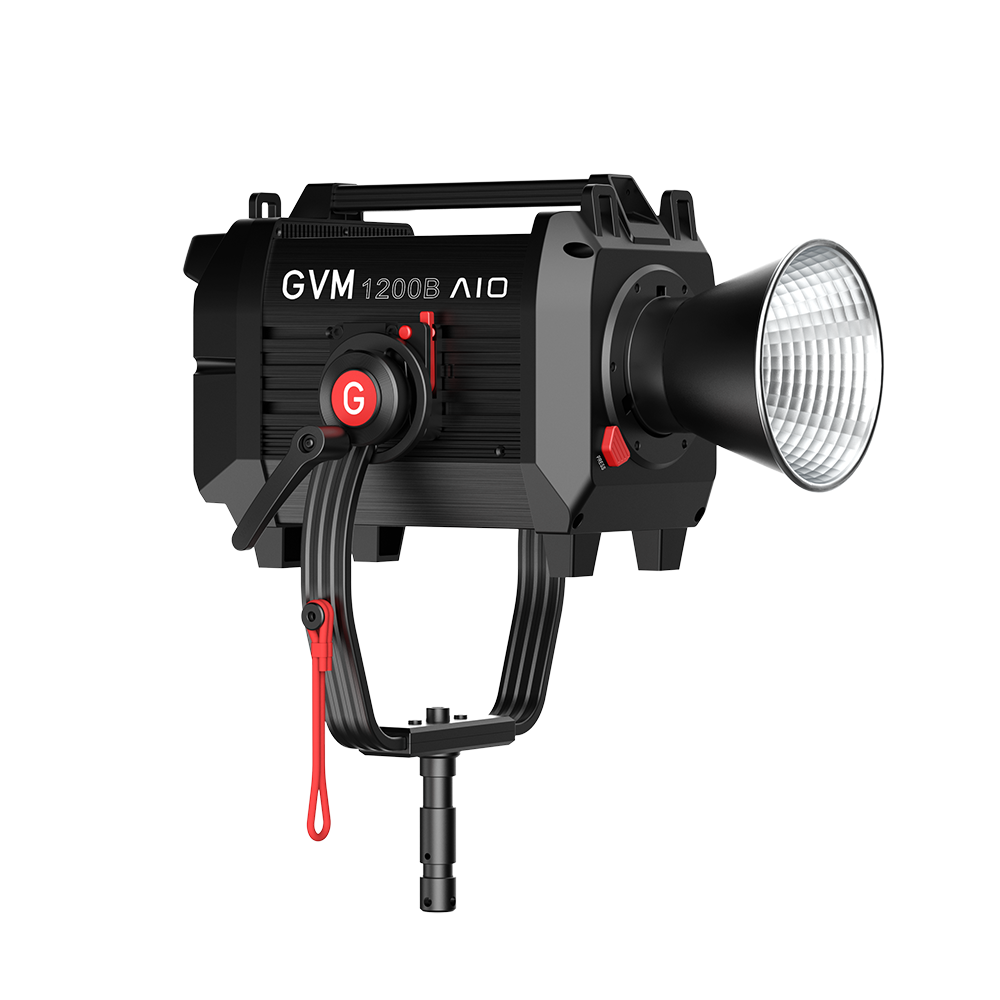Every time we step into a movie theater, the immersive interplay of light and shadow instantly transports us into the story, leaving us in awe of the powerful visual atmosphere. However, for many budding directors and gaffers just entering the world of filmmaking, mastering this cinematic ambiance, and more critically, navigating the dizzying array of photography fill lights on the market to choose the professional lighting equipment truly suitable for on-set production, often becomes their primary challenge.
In the dazzling realm of visual storytelling, light is far more than just illumination. It’s an unspoken language of shaping, emotion, and narrative. Masterful lighting breathes life into a scene, drawing the audience deeper into the story – this is the magic of “cinematic lighting.” And at the core of achieving this lies professional Filming Lights (movie/video shooting lights).
This article will take you deep into the mysteries of Filming Lights: from foundational concepts to various types of fixtures, from essential parameters to practical lighting techniques. We’ll also analyze cutting-edge equipment like the GVM SD700B AIO, demonstrating how such advanced tools can elevate your productions and help you fully master the art of cinematic lighting.
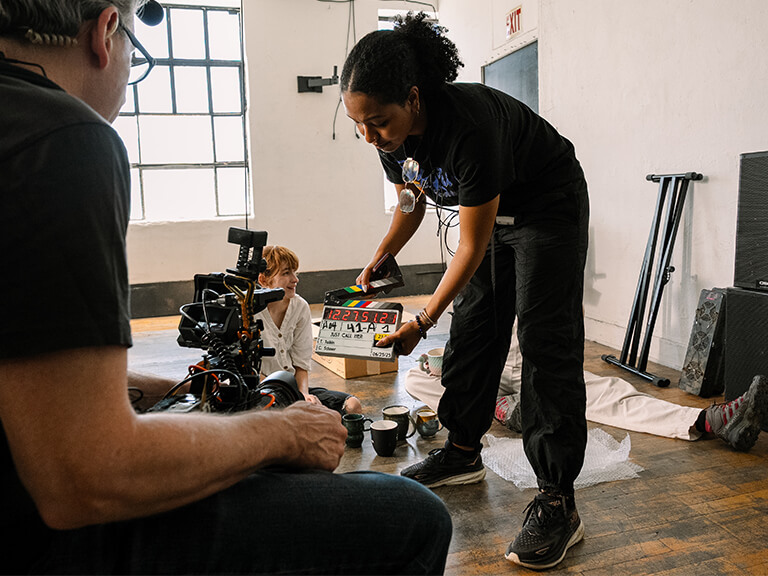
Part One: The Standard Defined: What Truly Qualifies as Filming Lights?
In the vast market of lighting equipment, not every “photography light” can be genuinely called a Filming Light. So, what precisely qualifies a lighting fixture for the professional title of “movie/video shooting light”? It’s far more than merely providing brightness; it’s a specialized tool capable of precisely sculpting light and shadow, controlling emotions, and aiding visual storytelling.
The fundamental difference between Filming Lights and ordinary illumination lies in their extreme control over light and their exceptional output quality. They are designed to achieve specific visual and artistic goals, not just to light a scene:
- Precision Control Over Light Quality:
- High Color Rendering and Accuracy: Professional Filming Lights must be able to highly reproduce the true colors of the subject, avoiding color shifts. This is measured by high CRI (Color Rendering Index) and TLCI (Television Lighting Consistency Index) values. They ensure natural skin tones and accurate scene colors, forming a solid foundation for post-production color grading.
- Accurate Color Temperature Control: The ability to stably output light at specific color temperatures (e.g., 3200K warm light or 5600K daylight), along with broad and precise color temperature adjustment, is crucial for matching ambient light or creating specific moods.
- Flicker-Free Output: Ensuring no visible flicker in the footage when shooting at various frame rates and shutter speeds is a non-negotiable requirement for video production.
- Powerful Light Shaping Capabilities:
- Brightness and Dimming Precision: Offering a wide brightness range from extremely low to very high, and supporting 0.1% or even higher precision stepless dimming, allows for smooth and natural transitions in light intensity.
- Precise Beam Control: Whether it’s focusing, flooding, or shaping light through accessories like barndoors, softboxes, or grids, professional lights achieve ultimate light sculpting.
- Creating Dimension and Atmosphere: Using contrasts between light and shadow to give subjects and scenes depth and texture; employing cool or warm tones, and hard or soft light, to directly influence audience emotions and convey specific emotional narratives.
- Exceptional Reliability and Adaptability:
- Stable and Consistent Output: Guaranteeing that brightness, color temperature, and color rendering remain stable during long hours of operation.
- Efficient Heat Dissipation and Quiet Operation: Low heat output even at high power, coupled with a nearly silent fan design, ensures a comfortable shooting environment and pristine on-set audio recording.
- Robust Durability and Multi-Scene Adaptability: Designed to withstand frequent movement and various environmental challenges. Some fixtures even feature rain and splash-proof capabilities, adapting to complex on-location shooting needs.
In summary, Filming Lights are more than just “fill lights.” They are sophisticated professional instruments integrating optics, electronics, and structural design, essential for filmmakers to realize visual storytelling, emotional expression, and elevate overall picture quality.
Part Two: Evolution of Filming Lights: From Traditional to the LED Era
As technology advances, the types of Filming Lights also evolve rapidly. Understanding their individual characteristics is the first step in making an informed selection.
A. Traditional Lighting Fixtures:
- Tungsten Lights (Fresnel): Typically 3200K (warm light), excellent color rendering, and stable output. However, they generate significant heat, consume high power, and their color temperature doesn’t match daylight for outdoor use.
- HMI Lights (Hydrargyrum Medium-arc Iodide): Simulate daylight (approx. 5600K), extremely bright, and powerful. They are a top choice for outdoor fill light and simulating sunlight. However, they are expensive, bulky, noisy, and generate substantial heat.
- Fluorescent Lights (Kino Flo): Offer soft light, relatively low heat and power consumption, and good color rendering. Suitable for indoor close-ups and situations requiring soft, diffused light.
B. The New Mainstream: LED Lights
In recent years, LED technology has advanced rapidly, becoming the dominant choice in the Filming Lights sector. Why is LED the future trend?
- Energy Efficiency and Environmental Protection: LEDs consume significantly less power than traditional fixtures, drastically reducing electricity costs and carbon emissions, contributing to environmental protection.
- High Efficiency Illumination: LED lights provide high brightness and excellent color rendering (CRI/TLCI), ensuring sufficient illumination and accurate color reproduction for your footage.
- Versatility: LEDs offer a wide range of applications, with adjustable brightness, color temperature (Bi-color), and even full-color (RGBWW) capabilities, fulfilling diverse creative needs. They power on instantly, with virtually no warm-up time.
These advantages have driven brands like GVM to continually innovate in LED lighting, leading to more efficient, intelligent, and user-friendly cutting-edge equipment. For instance, integrated COB spotlights like the GVM SD700B AIO are prime examples of today’s high-performance LED lighting fixtures.
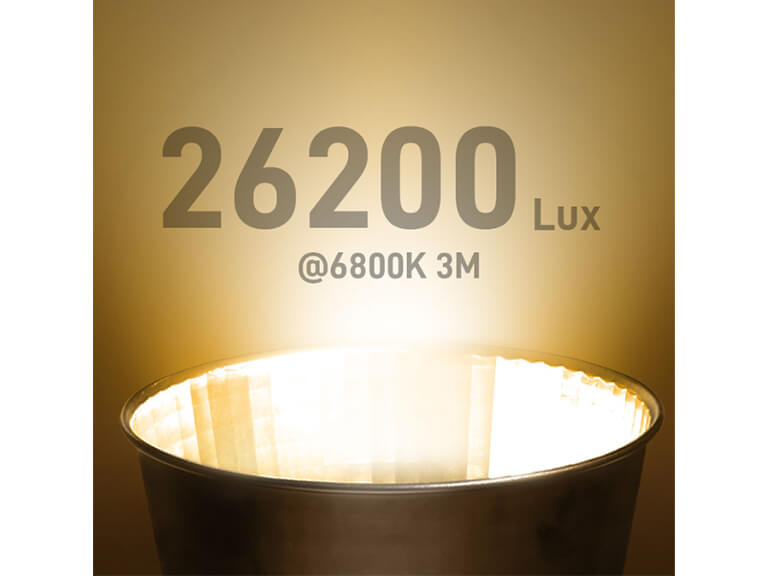
Part Three: Deciphering Core Parameters: How to Choose the Right Filming Light?
After gaining a deeper understanding of Filming Lights’ professional attributes and types, the next step is to master how to select the fixture that truly aligns with your creative needs. This isn’t merely about pursuing the “brightest” or “most expensive” option; it’s about precisely matching your shooting scenarios, budget, and desired visual outcomes. When choosing a Filming Light, you need to act like a detective, meticulously examining its hidden “genetic code”—its core parameters. These parameters directly determine the light’s performance boundaries, light quality, and its adaptability and usability in real-world shooting conditions.
Here are the crucial parameters you must focus on, serving as your “navigation map” for making an informed choice:
- Brightness/Luminance (Lux/Foot-candles): Measures light intensity. For professional cinematic lighting, especially when illuminating large scenes or shooting at a distance, high brightness is paramount. For example, a 700W COB light like the GVM SD700B AIO, equipped with a standard reflector, can deliver up to 24,000 Lux at 3 meters, sufficient for most professional scenarios.
- Color Temperature (Kelvin – K): Indicates the warmth or coolness of the light. Fixtures with a wide bi-color range (e.g., 2700K-6800K) can easily match various ambient light conditions, from warm incandescent to cool daylight, or create specific atmospheres.
- Color Rendering Index (CRI / TLCI): Measures a light source’s ability to accurately reproduce real-world colors. Higher CRI and TLCI values (professional-grade typically requires 95+) mean more accurate color reproduction. This is crucial for rendering accurate skin tones and scene details, significantly reducing post-production color correction.
- Dimming Range: High-precision dimming capabilities (e.g., 0.1%-100%) allow for more subtle control over light intensity, enabling delicate light and shadow transitions.
- Heat Dissipation and Noise: High-power lights can generate significant heat and fan noise, potentially affecting the shooting environment and on-set audio recording. Superior cooling systems (e.g., intelligent temperature control, silent fans) ensure the light operates stably for extended periods without generating bothersome noise.
- Portability and Setup: For on-location shoots or quick transitions, the fixture’s size, weight, and ease of setup are critical. Innovative designs, such as integrating power supplies and control modules directly into the light head (“all-in-one design”), can significantly enhance portability and deployment speed.
- Control Methods: Beyond manual controls, support for App control (e.g., via Bluetooth Mesh network for simultaneous multi-light control), DMX control, or wireless DMX (like CRMX) directly impacts operational convenience and multi-light synchronization, especially in complex lighting setups.
- Expandability: Whether the light uses a universal mount (e.g., standard Bowens Mount) that is compatible with a wide range of third-party accessories (e.g., softboxes, parabolic reflectors) expands the light shaping possibilities.
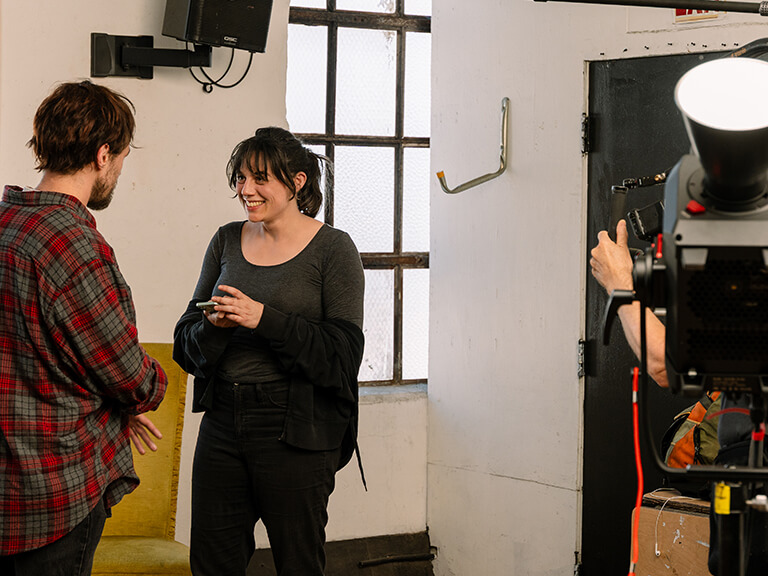
Part Four: Mastering Lighting Techniques: Let Light Tell Your Story
Owning professional-grade Filming Lights is merely the first step toward cinematic illumination. To truly transform light into a visual language and make it serve your story, you need to deeply understand and skillfully apply various lighting techniques. Light and shadow, like a painter’s brush and canvas, can, in the hands of a seasoned gaffer, outline characters’ inner worlds, forge unique scene atmospheres, and even become an invisible force driving the narrative.
Here are the core lighting principles you must master after acquiring your Filming Lights equipment:
- A. Foundational Principle: Three-Point Lighting
This is the most classic lighting setup, consisting of a Key Light, Fill Light, and Backlight/Rim Light. It provides excellent dimensionality and separation for the main subject in your frame. - B. The Character of Light: Soft Light vs. Hard Light
Hard Light produces sharp, well-defined shadows, emphasizing texture and drama; Soft Light creates gentle, diffused shadows or no shadows at all, resulting in a smooth image, ideal for portraits and soft, ethereal scenes. - C. Atmosphere Creation: High-Key vs. Low-Key Lighting
High-Key Lighting features overall high brightness and low contrast with minimal shadows, often used for comedies, commercials, or bright, airy atmospheres. Low-Key Lighting is characterized by overall low brightness, high contrast, and deep shadows, frequently employed for suspense, thrillers, dramatic scenes, or to convey intense emotions. - D. Motivated Lighting: This technique involves creating light sources that have a plausible “motivation” within or outside the frame, such as sunlight from a window or a practical lamp in a room, enhancing realism.
- E. Utilizing Special Effects:
Beyond basic lighting, many modern fixtures come with a rich array of built-in special effects. For instance, advanced units offer 12 or more dynamic lighting effects like lightning, police car lights, TV flicker, candlelight, explosion, welding, and strobe. These can directly add drama or realism to your story on set, eliminating the need for complex post-production.
Part Five: Light Shaping Essentials: Must-Have Filming Light Accessories
Just as a painter cannot create without brushes, or a sculptor without tools, professional Filming Lights require a series of auxiliary accessories to unleash their full potential. These accessories are crucial for achieving cinematic lighting, allowing you to precisely shape, adjust, and control the raw light, transforming it into a true work of art in your hands.
Here are the essential accessories indispensable for cinematic lighting:
- Light Stands: The stable foundation for your lights, supporting various lighting fixtures at desired heights and positions, ensuring safety and precise illumination.
- Softboxes / Umbrellas / Diffusion Fabrics: These are the “magicians” for creating soft light. By enlarging the light source’s surface area, they effectively soften and diffuse light, eliminating harsh shadows, making them ideal for portraits and scenes requiring smooth transitions, resulting in a more natural and pleasing image.
- Gels / Filters: A range of transparent or translucent colored sheets used to alter the color of light or adjust its color temperature, allowing you to match ambient light, create specific moods, or achieve creative color effects.
- Barndoors / Flags / Grids: These are the “sculpting tools” for light. They enable you to control light spill, precisely define the illuminated area, and shape the beam’s form and hardness, preventing unwanted light contamination or creating shadows in specific regions.
- Reflectors: Simple yet highly effective tools for fill light. By bouncing main light or ambient light, they supplement fill, reduce shadow harshness, or create appealing catchlights in subjects’ eyes, adding depth and vibrancy to the image.
It’s important to highlight that to maximize versatility and expandability, most professional LED lighting fixtures, including cutting-edge products like the GVM SD700B AIO, adopt the industry-standard Bowens Mount. This design means your light can be paired with a vast array of third-party softboxes, parabolic reflectors, lanterns, and other accessories, significantly expanding its light shaping capabilities and creative potential, while also protecting your investment in accessories. Furthermore, robust designs like the 360° rotatable U-bracket facilitate convenient installation, angle adjustment, and rapid repositioning, offering great flexibility for on-set operations.
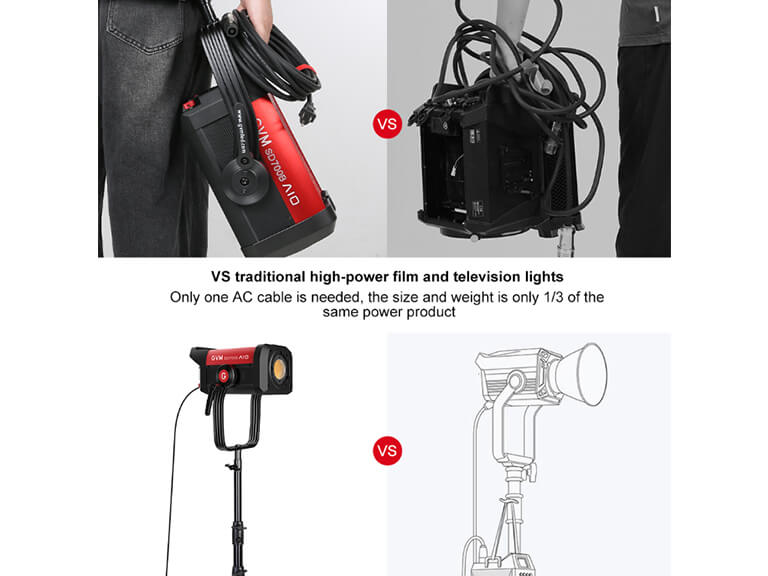
Part Six: Cutting-Edge Equipment Spotlight: The GVM SD700B AIO – A Paradigm of Integration and Smart Control
In today’s Filming Lights market, GVM stands out with its innovative “AIO” (All-In-One) series. Taking the GVM SD700B AIO as a prime example (its series products, like the GVM PRO SD650B AIO, share similar characteristics), it perfectly illustrates how cutting-edge equipment integrates high performance with ultimate convenience.
GVM SD700B AIO’s Key Highlights:
| Feature Category | Function Description | Detailed Explanation |
|---|---|---|
| Core Performance | High Color Rendering | CRI 97+, TLCI 97+ (based on SD650B data), ensuring accurate color reproduction. |
| Color Temperature Range | 2700K – 6800K Bi-color adjustable, covering a broad spectrum. | |
| Brightness | 700W powerful output, delivering cinematic brightness. (SD650B offers a max brightness of 116,000 Lux at 1m with the GVM-F60 Fresnel attachment, which can boost output by up to 960%) | |
| Dimming Range | 0.1% – 100% precise dimming. | |
| Reliability | Stability | Brightness, color temperature, and color rendering remain stable during long hours of operation. |
| Smart Cooling | Intelligent temperature control, silent fan, prevents overheating, extends bulb life, ensuring quiet on-set operation. | |
| Rain-Resistant Design | Splash-proof functionality (refer to official data for specific IP rating), suitable for outdoor use. | |
| Control Methods | Integrated Design | Power ballast and control box seamlessly integrated into the light head, enabling true plug-and-play, zero-cable setup, and 60-second rapid deployment. |
| APP Control | Supports remote control and adjustment via smartphone/tablet APP, featuring Mesh Bluetooth networking for simultaneous control of multiple lights. | |
| DMX Control | Supports 5-pin DMX interface, offering 8-bit/16-bit precision DMX control for professional wired integration. | |
| Expandability | Standard Mount | Standard Bowens Mount, compatible with major light modifiers on the market. |
| U-bracket | 360° rotatable U-bracket for convenient multi-angle lighting. | |
| Special Features | Dynamic Lighting Effects | Built-in 12 dynamic light effects, such as lightning, CCT loop, candle, TV, paparazzi, explosion, flame, and welding, enhancing creative expression. |
| Light Source Matching | Preset various light source matching modes. |
The advent of the GVM SD700B AIO has significantly streamlined professional lighting setups, allowing creators to devote more energy to composition and performance. Its high-performance metrics, stable output, and diverse control methods make it an indispensable tool for modern filmmaking.

Part Seven: The Smart Choice: How to Select Filming Lights for Your Productions?
Having understood the professional standards of Filming Lights, grasped the pros and cons of various types, and familiarized yourself with lighting techniques and essential accessories, the ultimate challenge lies in: how to make the most informed lighting choice from the myriad options on the market for your specific creative needs? This is more than just purchasing equipment; it’s a strategic decision impacting your production efficiency, visual quality, and long-term return on investment.
Here are practical tips for filmmakers, helping you accurately identify and select the Filming Light best suited for your productions:
- Define Your Creative Needs and Budget Boundaries:
- Shooting Subject & Scale: What type of content do you primarily create? Is it detailed portraiture, interviews, or large-scale scenes, outdoor night shots? Different genres demand distinct requirements for light intensity and beam characteristics.
- Shooting Environment & Frequency: Do you mostly work in a fixed studio, or do you frequently require on-location, mobile shoots? This will directly influence your need for light portability, durability, and power options.
- Special Requirements: Do you need to simulate specific lighting effects? How sensitive are you to noise for on-set audio recording?
- Budget Range: Clearly define your budget ceiling. This helps narrow down your choices and find the optimal balance between performance and price.
- Embrace the LED Technology Wave:
In the current market, LED lighting fixtures have become an irreversible trend in film and video lighting, thanks to their outstanding advantages in energy efficiency, high performance, versatility, and smart functionality. They not only significantly reduce operating costs and heat generation but also offer unprecedented creative flexibility, making them a priority for future investments. - Master Core Parameters, Understand Light’s Essence:
Don’t be swayed by flashy advertising. Delve deep into a light’s brightness, color temperature range and precision, and color rendering indices (CRI/TLCI)—these core parameters are crucial for determining image quality. High brightness and accurate color reproduction are the cornerstones of professional work. - Prioritize “All-in-One” and “Extreme Portability”:
For modern teams seeking high efficiency and mobile shooting, fixtures that highly integrate power and control modules with a compact and lightweight design (like innovative all-in-one COB lights) are undoubtedly the top choice. For instance, high-performance integrated lights like the GVM SD700B AIO can significantly streamline your workflow, eliminate tangled cables, save valuable setup time, and allow you to focus more on the creative process itself. - Consider Versatility and Future Expansion Potential:
Opting for lights with industry-standard mounts (e.g., Bowens Mount) provides greater freedom in choosing softboxes, reflectors, and other accessories. This prevents being confined to a single brand and effectively protects your investment in accessories. Good expandability also means the light can adapt to your evolving shooting needs. - Conduct Thorough Research, Make Deliberate Decisions:
Before making your final purchase, be sure to watch professional review videos and read articles, and understand real user feedback. Also, choose brands that offer excellent after-sales service, technical support, and continuous firmware updates to ensure your equipment remains in optimal condition for long-term use.
Conclusion: Endless Light, Boundless Creativity
Filming Lights are the magic wand of filmmaking, empowering you with the immense ability to shape light and express emotion. From understanding the fundamental principles of light, to mastering the characteristics of various fixtures, and then leveraging cutting-edge, integrated smart equipment like the GVM SD700B AIO, you are steadily progressing toward the pinnacle of cinematic lighting.
The world of light and shadow is endless, and the realm of creativity boundless. Pick up your lights, bravely practice, explore, and use light to tell those deeply moving stories!


